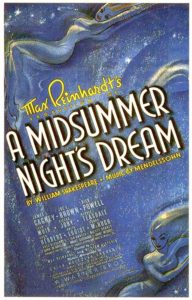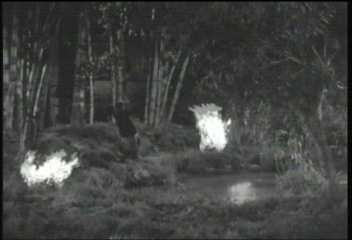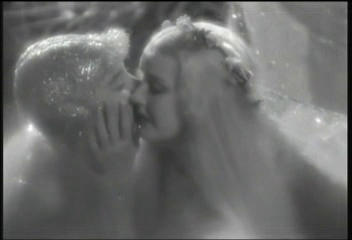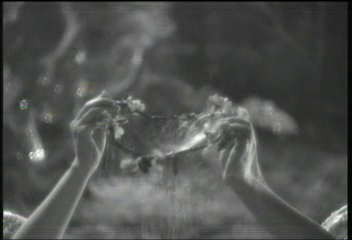|

Synopsis:
In mythical Greece, several storylines intersect to wreak magical havoc: beautiful Hermia (Olivia de Havilland) is in love with Lysander (Dick Powell), but has been told by her father (Grant Mitchell) that she must marry Demetrius (Ross Alexander), who is pursued by lovestruck Hermia (Jean Muir); a team of actors, including Bottom the Weaver (Jimmy Cagney), gather to rehearse a play in honor of the upcoming marriage between a duke (Ian Hunter) and his fiancee (Verree Teasdale); and when the king of the fairies (Victor Jory) is displeased by his wife Titania’s (Anita Louise) disobedience, he orders the fairy Puck (Mickey Rooney) to cast naughty spells — including turning Bottom into a donkey and causing Titania to fall in love with a literal ass.
|
|
Genres, Themes, Actors, and Directors:
- Actors and Actresses
- Dick Powell Films
- Fantasy
- Ian Hunter Films
- Jimmy Cagney Films
- Living Nightmare
- Love Triangle
- Mickey Rooney Films
- Mistaken or Hidden Identities
- Olivia de Havilland Films
- Play Adaptations
- Royalty and Nobility
- Shakespeare
- Star Crossed Lovers
- William Dieterle Films
Review:
William Dieterle directed this adaptation of Max Reinhardt‘s famed theatrical production of Shakespeare’s romantic comedy featuring lovers, actors, nobility, fairies, mixed identities, sleep, dream, and mischief. It’s about an hour too long, rambles, and doesn’t always cohere — but it remains an entirely unique cinematic outing on numerous counts. The sets, costumes, and special effects transport us to an ethereal, almost undefinable time and space, and we’re frequently shown images and characters — i.e., the big-eared bald creatures (who are they?) — unlike anything else seen in movies of this period. Rooney, while annoying, is well-cast as Puck; Cagney has a field day getting hyper and hee-hawing as Bottom; and earnest de Havilland (in her movie debut) sparkles with angst and love. Fans of Some Like it Hot (1959) will surely enjoy seeing Joe E. Brown in an early role (cross-dressing, no less) — and while the final theatrical performance put on by Cagney’s troupe at the wedding feels like a lengthy addendum to an already-overlong show, it’s an invaluable glimpse at what broad comedy during Shakespeare’s time might have looked like. Be sure to check out TCM’s article for more information on this unusual production, which opened to mixed reviews but was critically lauded for its artistic elements (including the dance numbers and numerous dream-like sequences).
Redeeming Qualities and Moments:
- Luminous sets and costumes


- Byron Haskin’s special effects


- Hal Mohr’s cinematography


Must See?
Yes, once, as an unusual Hollywood outing. Listed as a film with Historical Importance in the back of Peary’s book.
Categories
Links:
|







One thought on “Midsummer Night’s Dream, A (1935)”
Not must-see: only for Shakespeare fans, or those curious to see some of their favorite actors taking on the challenge of The Bard.
I’m rather in agreement with what’s written above. This film is definitely a mixed-bag.
It’s certainly too long. Light comedy like this should be delivered with more economy. You sometimes get the sense that the production is a little too reverent to its author, when picking the pace up more would be more effective. Some cast members (like Cagney, Powell and some others) are accustomed to moving things along and seem to do it instinctively – but this isn’t the case with everyone.
Rooney is the biggest offender here. Occasionally he’s effective but, yes, overall he’s annoying (with his semi-constant ‘joyous hysteria’).
Jory is an example of a performer who best captures the spirit of the piece most consistently.
Most of what goes on between the two pairs of lovers is handled rather well and it’s those sections that come off best.
The ballet sequences are generally fine and add visual flair – but even these sometimes go on a bit long and become overkill.
I’m in particular agreement re: the closing entertainment by the traveling players. It’s milked beyond necessity and is generally forced in nature.
The effect of the film on the viewer – as a whole – is one of being pulled in only to be pushed out. Still, the cast members not all that seasoned as Shakespeare players are to be applauded for being better than perhaps expected.
NOTE: I’m not a huge fan of the lighter Shakespeare comedies. If I’m going to watch one of his plays that is not a drama, then something like ‘The Taming of the Shrew’ is more to my personal liking. Strangely, Peary overlooked Zeffirelli’s wonderful adaptation with Burton and Taylor (1967).